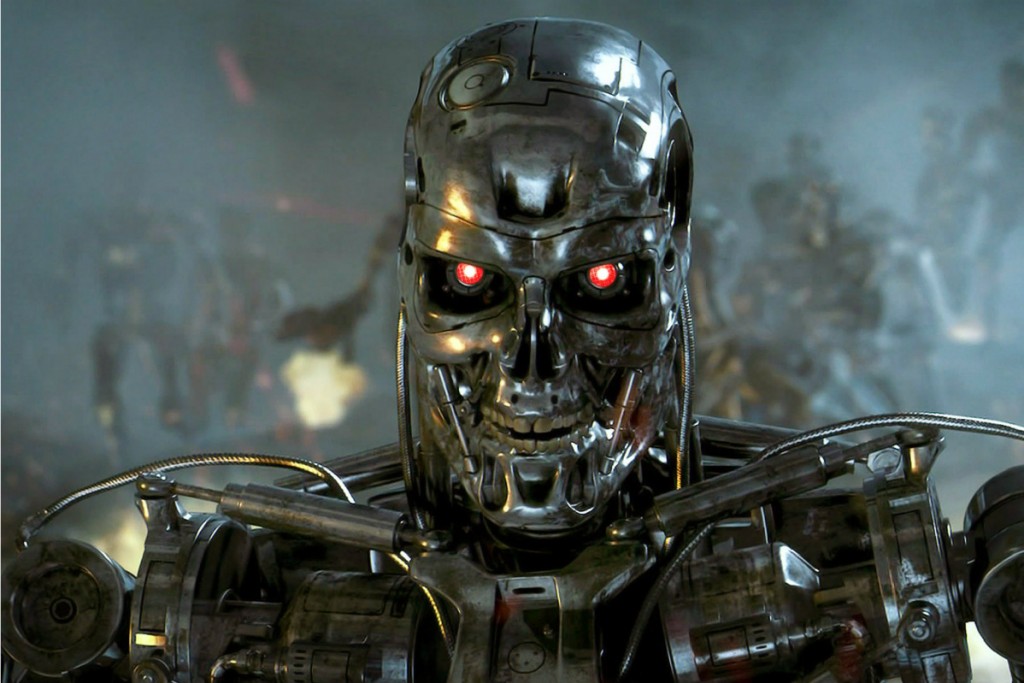WARNING: SPOILER ALERTS
There’s something about the Terminator franchise that I truly dig. I like that it doesn’t pretend its science is anything other than ridiculous coming out of the mouths of muscle-bound beefcakes, yet still takes its concepts of ethics and cause-and-effect seriously. I like that, apart from the dour-faced Salvation, these films are aesthetically exciting, filling the screen with eye-popping action set-pieces and visual effects that allow us to actually see and follow what’s happening, rather than throwing graphics at the screen and expecting audiences to nod in glazed-eye approval. Perhaps most of all, I just like films with some actual imagination behind them. I can forgive the lapses into bad acting and nonsensical dialogue if it feels like somebody behind the scenes spent longer than a nanosecond on devising ways to entertain an audience rather than simply doing the same as before (like The Avengers: Age of Ultron) and expecting it not to notice.
It’s true that not a whole lot of Terminator Genisys makes sense when held up to close inspection, but part of the beauty of time travel is that doesn’t really need to. It makes sense in their world so, really, I’m not going to waste my energy attempting to decipher it. Where I thought it succeeded was in crafting a story that actually builds upon the themes of earlier franchise entries while being allowed to become its own thing (at least The Terminator and Terminator 2: Judgment Day – Rise of the Machines, Salvation and the TV-series The Sarah Conner Chronicles have been more or less scrapped from the timeline).
In that regard it is much better than Jurassic World, which essentially wanted to actually be its 1994 predecessor by simply mimicking its action and its plot points to the letter — without the finesse of Spielberg. And while director Alan Taylor is no James Cameron when it comes to the action or the drama, there’s a certainly enjoyment to be had in watching him play with the building blocks of Cameron’s first two Terminator films, up to and including directly recreating one famous sequence from the 1984 original, and then watching them morph into their own beasts with their own rules and boundaries. Yes, it’s a Terminator film in that Arnold Schwarzenegger is there as the titular robot with Sarah Connor (Game of Thrones‘ Emilia Clarke), John Connor (Jason Clarke), and Kyle Reese (a frequently unclothed Jai Courtney), too, and all of them attempt to save the day (or sometimes destroy it). What’s different is that this entry into the series has a desire to build its own future, its own timeline of events from amongst all the references and mythos and sly nods to the previous films.
Of course, if the themes of these Terminator flicks don’t strike you emotionally, then there’s every chance you’ll be bored by this flick’s insistence on extracting pathos out of the concepts of danger in technology, fate, destiny, and the ultimate futility of trying to stop war. By the time of the film’s climactic chase throughout the hive-like underground of Skynet, its story has been told and it becomes more of a tired retread that looks like any other film of its kind. But for most of Genisys’s two-hour plus runtime, it finds thrilling and fun ways to add something to its universe. But please, don’t ask me about why it’s spelled that way. That’s one mystery they don’t explain.
























-300x200.jpg)

